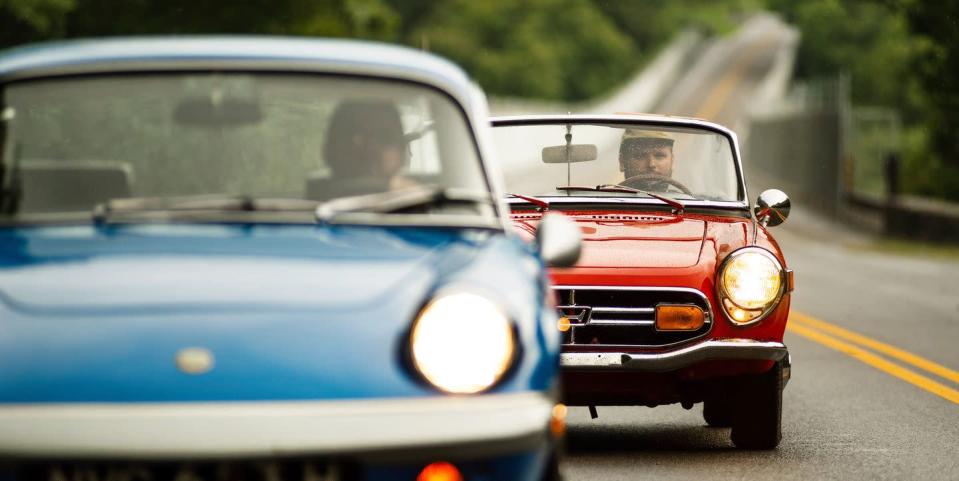
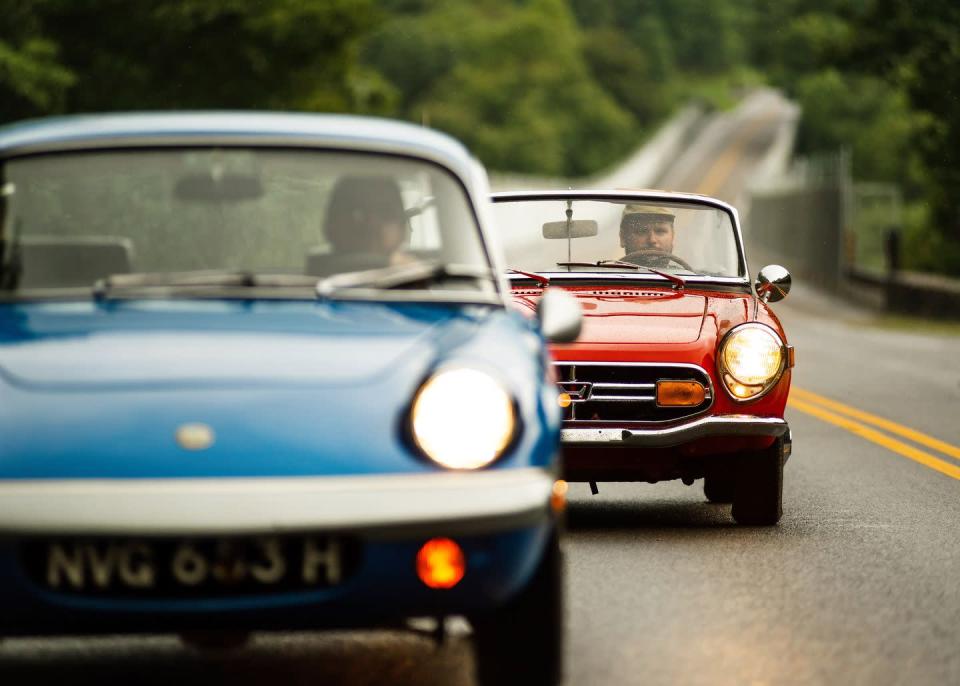
There are no two more different automakers than Honda and Lotus. One makes millions of sensible cars beloved around the globe, and the other makes a few lightweight sports cars. Founded in 1948, Lotus built its 100,000th car only four years ago. Honda sells more than 100,000 cars every month in the United States, sold about 4.1-million cars around the world, plus 17-or-so million motorcycles and more than six million other things like lawn mowers, hedge trimmers and outboard engines. But both Lotus and Honda were founded by mad genius engineers, whose personal flaws are almost as famous as their brilliant creations.
But that’s right now. In the Sixties, both were in the business of making lightweight roadsters.
The Honda S800 (and its predecessors the S500 and S600) and the Lotus Elan weren’t direct rivals. Honda aimed at the low-end of the sports car market, populated by the Austin-Healey Sprite and MG Midget siblings and the Triumph Spitfire. Lotus was more ambitious, putting the Elan up against serious players. And in terms of pace, the Elan nipped at the heels of Porsches and Jaguar E-Types.
That doesn’t mean some similarities were apparent. In Road & Track’s 1965 road test of the S600, our ancestors wrote, “[t]he steering and handling of the Honda are excellent by any standards and, frankly, are more reminiscent of the much more expensive Lotus Elan than the cars in its own price class.” In outright performance, Honda’s roadster was no match for the Elan but it was an overachiever. And it happens that the Lane Motor Museum in Nashville Tennessee has primo examples of each. Thanks to that institution’s gracious indulgence, we took both out on the country roads south of the city.
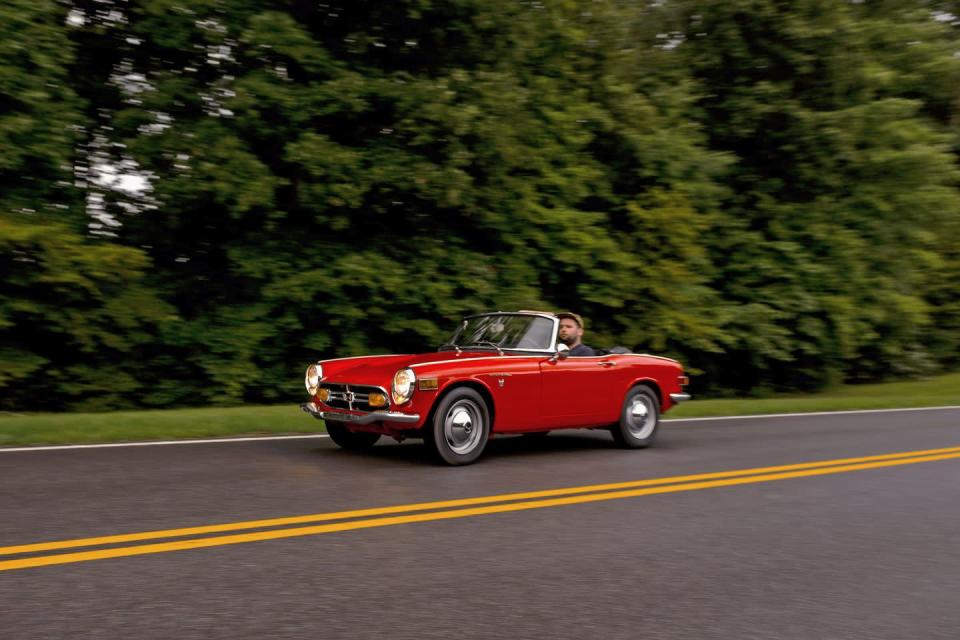
1968 Honda S800
Twist the ignition key to the left of the steering column, a high-pitched starter whirs up, and the engine immediately settles into a relatively high idle.
That the S800 sounds just like a motorcycle is no coincidence. Honda, of course, started as a motorcycle manufacturer, and when it began making cars in the early Sixties, it was bike people doing the engineering. All of Honda’s S-series cars used a high-revving four-cylinder engine with overhead cams, dual twin-choke Keihin carburetors, and high-tech for the day, a roller-bearing crankshaft. Both the S500 and S600 used chain-drive rear ends, though that was abandoned for a live axle on the later S800. The 800cc four in this car makes 70 horsepower at 8000 rpm, with redline indicated at 8500.
What’s astonishing is how Honda the S800 feels. Even though the S-series was one of the first Honda production cars (the other was the T360, a pickup with a 360cc version of this engine, mounted under the driver’s seat), the connection with later Honda cars is apparent. You sit unnervingly close to the door, yet the ergonomics are excellent. Pedals and steering wheel are straight ahead, and there’s no intrusion from the wheel wells. Honda’s miraculous packaging was a thing from day one.
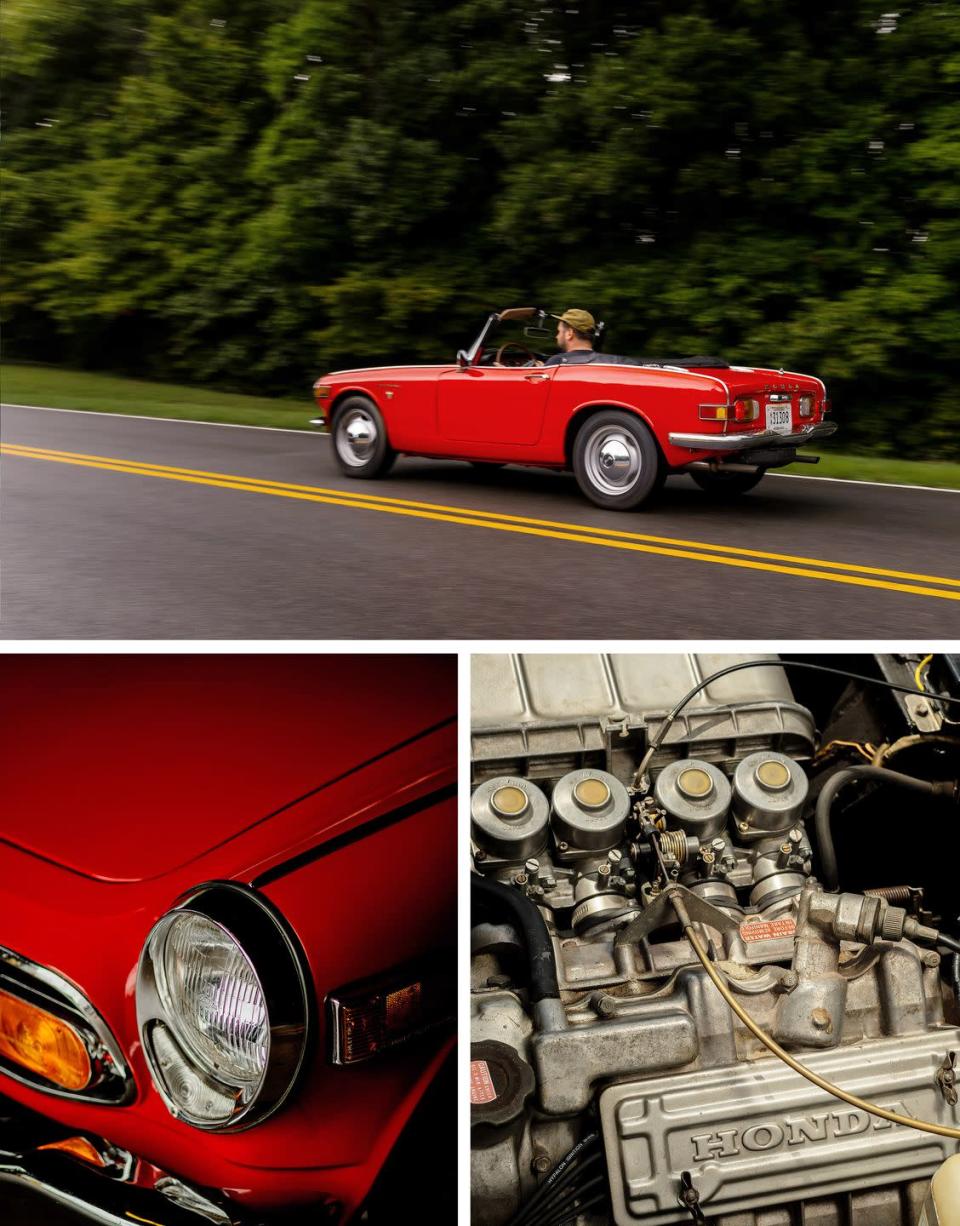
Then, the gearbox. Mind-blowing. Perfectly short throws, a delicate little gear lever, and an amazing metallic feel with every gear engagement. Plus, it’s fully synchronized and far easier to use than other transmissions of the era. Still, the engine is the show’s star. There’s surprising mid-range torque given its size and high-revving nature, though you still have to rev the living hell out of it. At first, I resolved not to push the engine too hard…then I encountered a hill. To keep up with modern traffic, all 8500 rpm must be utilized. It’s glorious and hilarious in equal measure. Its buzzsaw noise is very reminiscent of all of Honda’s Nineties high-revving fours, too, only there’s no VTEC bark because, of course, Honda hadn’t invented that yet. That said, the engine is happiest between 5000 and 8000 rpm. That’s good because it’s turning 5000 revs or more at highway speeds in fourth.
Ride and handling are also great. I didn’t realize the S800 had a solid rear axle until we stopped to take photos, and I poked around underneath. Steering is fingertip light, weighting up nicely after a little bit of on-center deadness. The only thing that felt of their era in a bad way were the brakes—front discs, rear drums—which require a strong kick to operate. Once the correct pressure is applied, they work well enough, if not inspiring confidence.
It wasn’t until the Seventies that Japanese cars challenged the American and European establishment. Driving this Honda now makes obvious that they should’ve been taken more seriously. It almost seems silly to compare the S800 to Sprites and the like. It was, and is, the better car.
While the S800 does not drive like a newer Honda, or even an S2000, the company’s DNA is evident in abundance. Honda is an engineering company first and foremost, and the S800 is an engineer’s car.
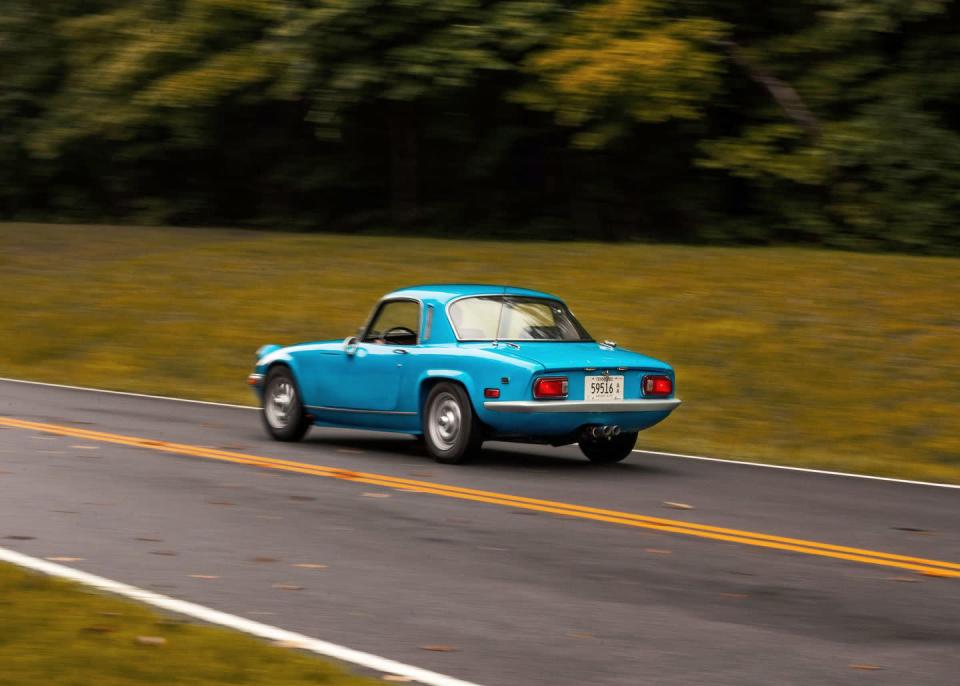
1970 Lotus Elan S4 SE Coupe
So, there’s a small problem here. This Elan isn’t a roadster. Lotus offered a “fixed-head” version of the Elan starting in the mid Sixties, and mechanically, it’s identical to the roadster. Since most of the Elan’s strength comes from its innovative steel backbone chassis and not the thin, fiberglass body, the coupe drive almost identically to the roadster. This being a late coupe with the “Special Equipment” package – electric windows and a leather covered wheel among a few other things – it’s as luxurious as the Elan ever got.
It’s not a luxury car. The walnut dash won’t fool anyone—this is as pure a sports car as you’ll ever find. The backbone chassis weighs just 75 pounds, and evidence of Colin Chapman’s legendary obsession with weight-saving is found throughout. The hood has no hinges, for example. Just pop the latch and take the whole thing off.
While the Honda must have surprised Sixties drivers with its engineering sophistication, the Elan surely blew minds with its speed. The 1.6-liter twin-cam four supposedly makes around 110 horsepower, though this car has a set of Weber carbs in place of the standard Strombergs, so I wouldn’t be surprised if it was hotter. Our January, 1969 road test of a U.S.-spec Elan S4 SE Coupe reports a weight of just 1630 pounds. In the hands of a good driver on a twisty road, this Elan would walk an NA Miata. It feels as quick, if not quicker than a 911 of the period, and it could even keep up with an E-Type in the right circumstance.
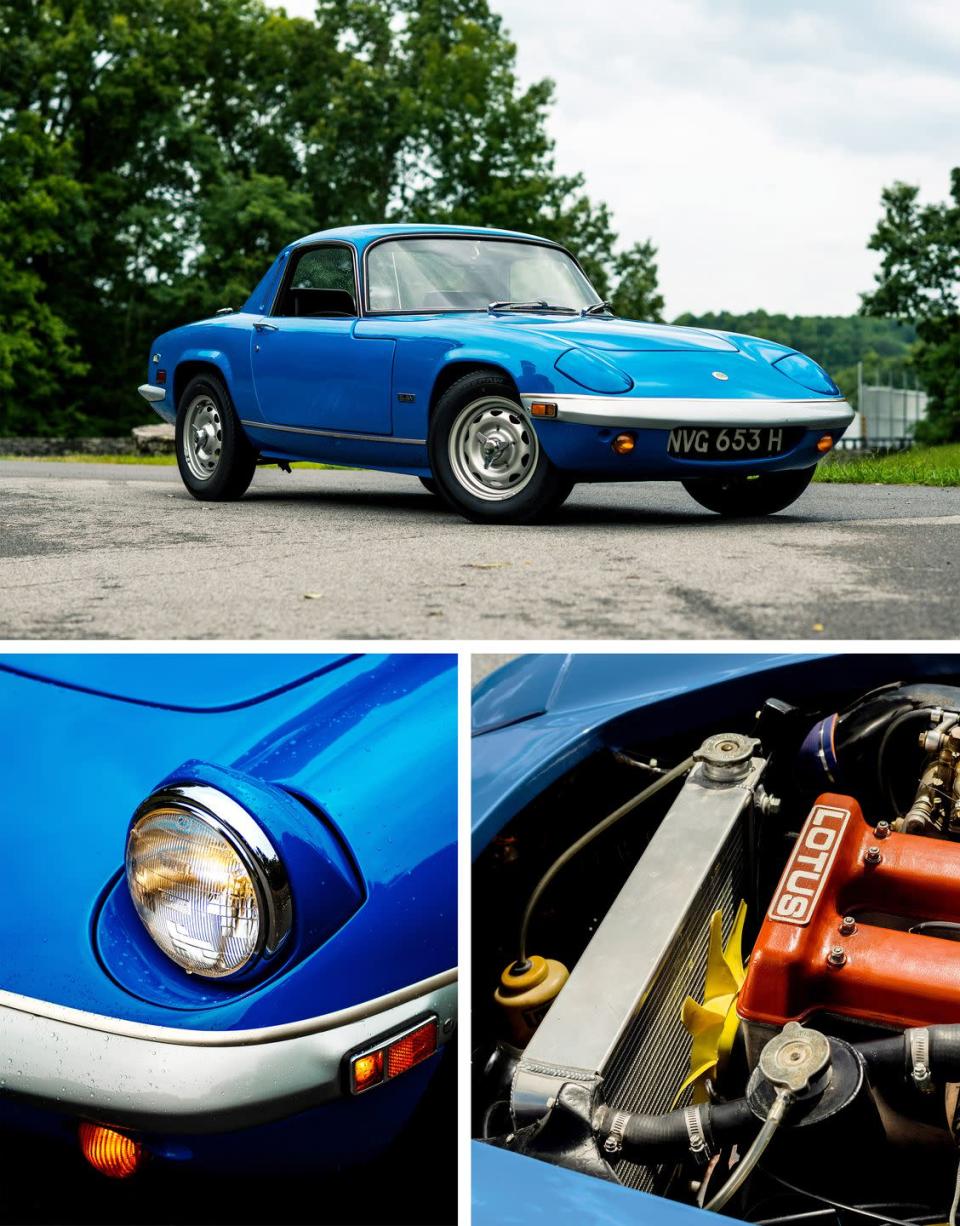
Thanks to its exotic construction, the Elan weighs less than the steel-bodied Honda, which comes in, according to Car magazine, at just under 1700 pounds. The Elan’s vastly superior power-to-weight ratio means that it’s an altogether more serious proposition. The Honda is a cute little sports car. The Lotus is a road-racing hero.
The ergonomics are slightly wacky. A cutout in the door card leaves more room for the driver’s right arm than there is in the Honda, but the pedals are well offset and so tiny, it’s best to drive barefoot. This might not sound like a huge deal, but my size nines had to come off to drive comfortably and precisely. Once settled in, though, it’s a treat, and apparent why the Elan has been a ride and handling benchmark. The double wishbone front and “Chapman Strut” rear–essentially a McPherson strut at the back of the car—is about perfect. Like so many great English cars, the Elan gets into a beautiful flow with the road surface beneath. There is tons of suspension travel, yet the car never feels floaty or unsettled. Steering is a revelation too, both communicative and with reassuring feel.
When discussing the Elan, most will focus on the outstanding chassis, the engine also deserves some love. The original Ford-Lotus was derived from the Blue Oval’s venerable overhead valve Kent four-cylinder, with Lotus-designed twin-cam heads and other tweaks made by Lotus. It’s an energetic engine, making a sound straight off of a historic racing grid. Like the Honda, the Elan’s four-speed gearbox has ultra-short precise throws, though this particular car had somewhat weaker synchromesh, so patience and delicacy was required.
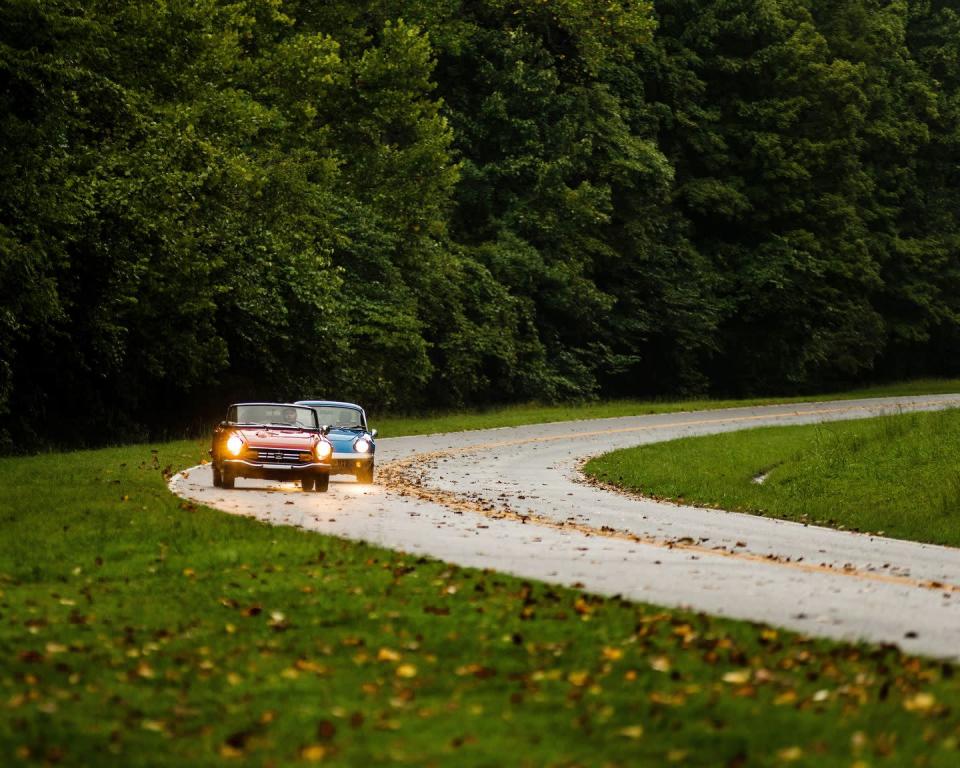
The Comparison
As a driving experience, the Lotus is ultimately in a different league than the Honda. That’s hardly shocking given it’s lighter, more powerful, and has a more sophisticated suspension. Yet, both cars represent the best engineering of their day, with different takes on the sports-car formula. In an ideal world, be the Lane and get both. The Lotus is more usable, given it easily keeps up with modern traffic, though the overall refinement and (presumed) reliability of the Honda has a strong appeal too. (Elans are notoriously finicky beasts.)
What’s fascinating is where these cars sit within their company’s histories. For Lotus, the Elan was a highwater mark, arguably Chapman’s best road car, and one the company never matched until the Elise arrived in 1996. For Honda, the S-Series previewed what was to come. The engineering force that created this remarkable four-cylinder then went on to create the CVCC Civic, Accord, CRX, NSX and all those Type-Rs. It has led the world across the subsequent decades.
Both are a lesson in the virtues of less is more. In sharp contrast to today’s sports cars which, except for the Mazda MX-5 Miata, feel leaden by comparison. They’re cars Road & Track was created to celebrate—machines that use clever engineering to provide a thrilling drive.

You Might Also Like
reference: ca.news.yahoo.com
